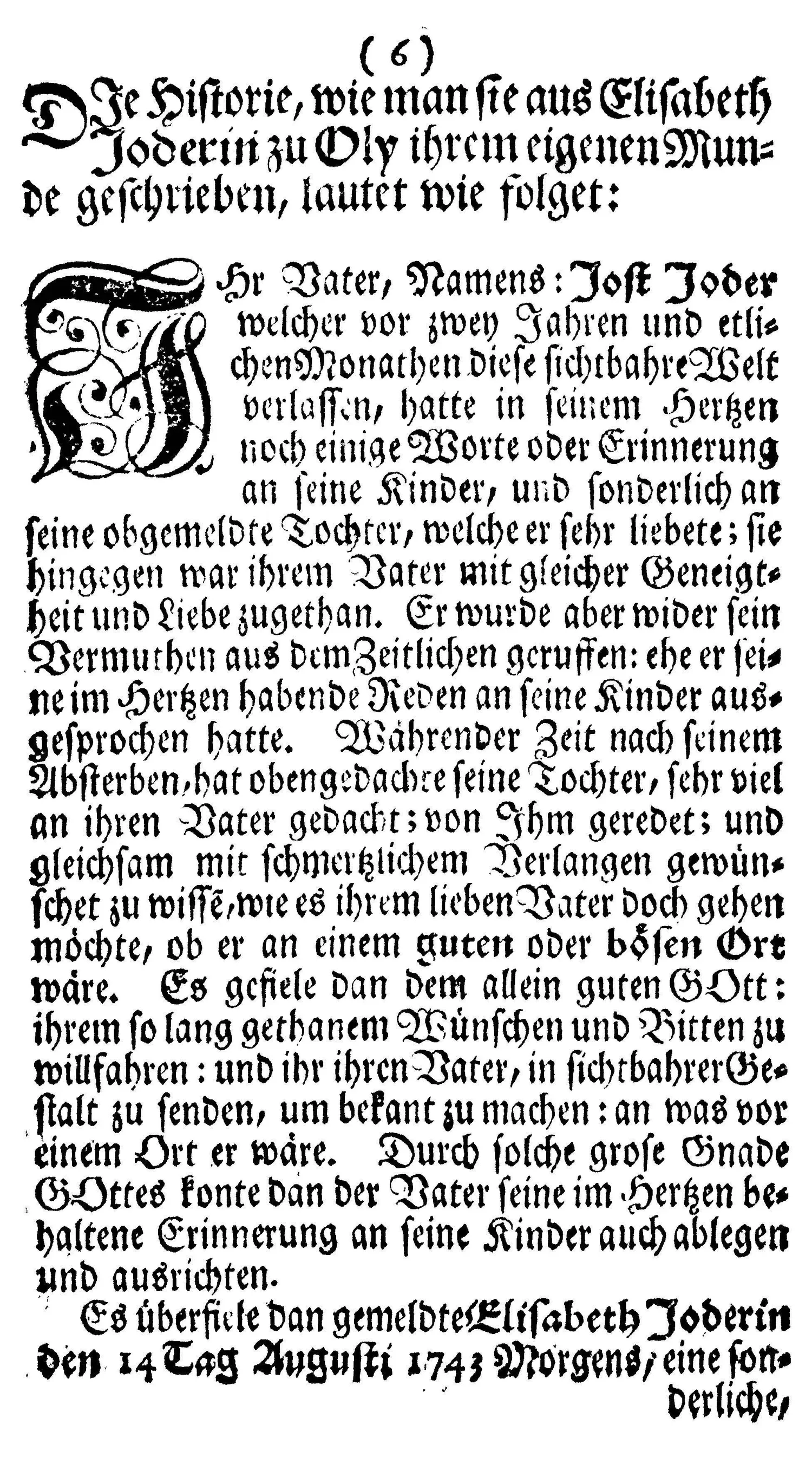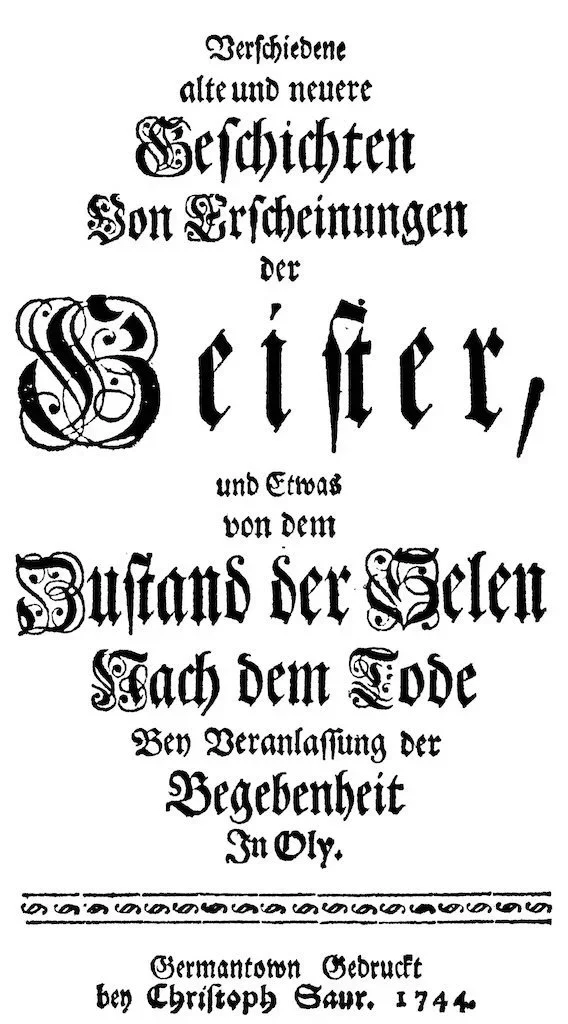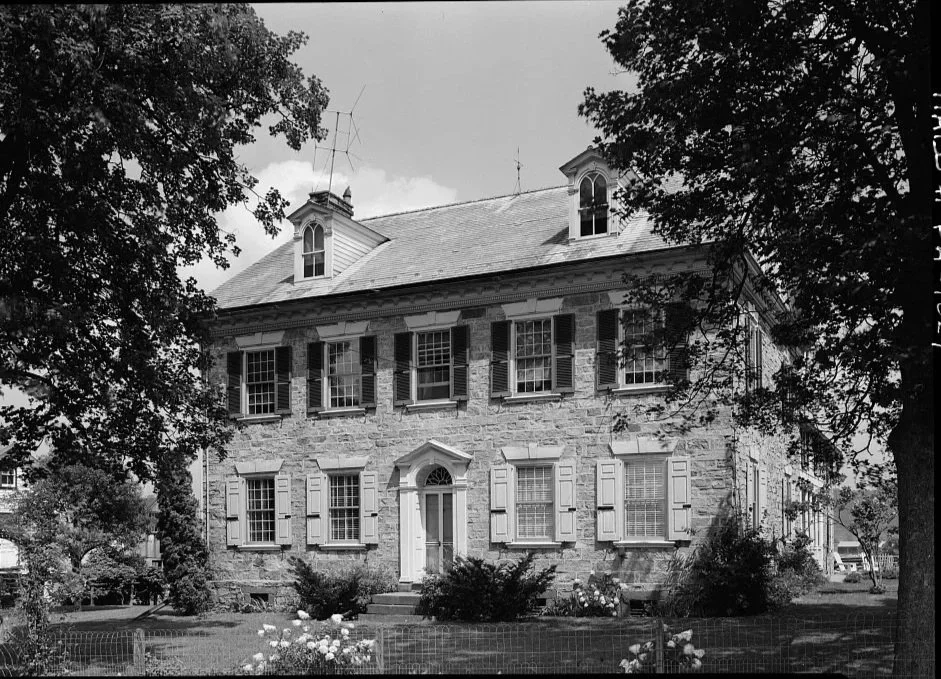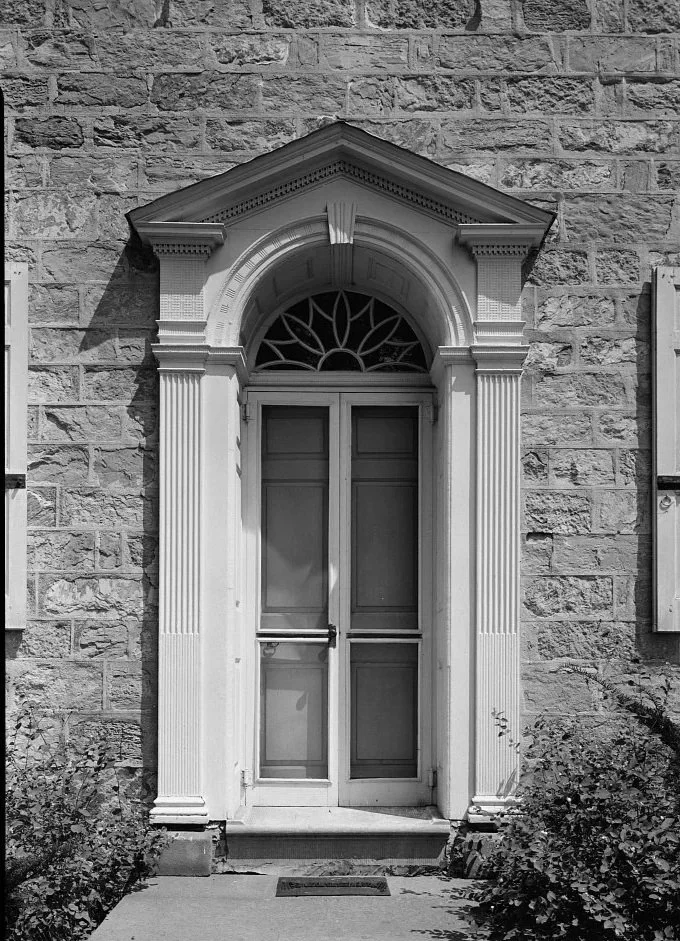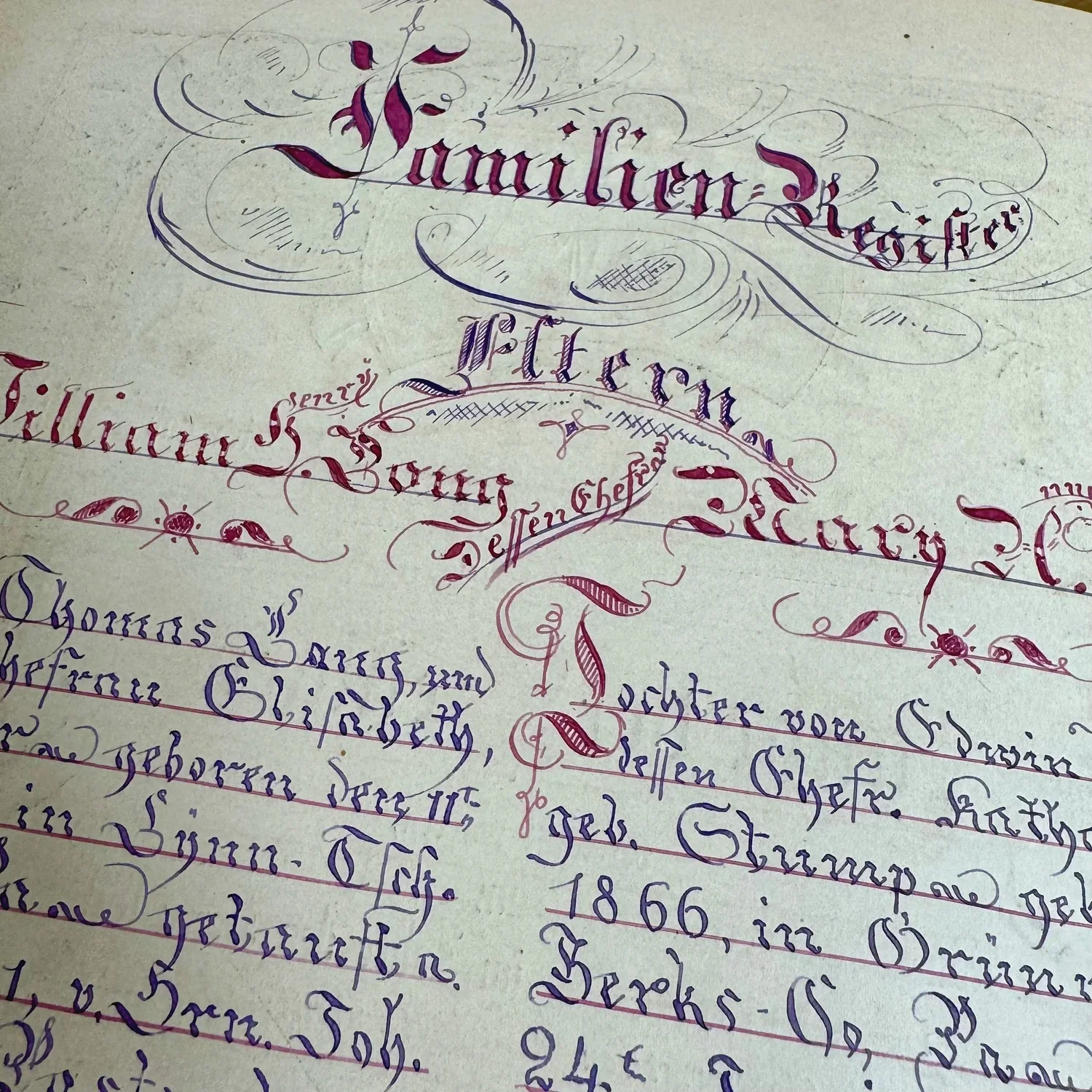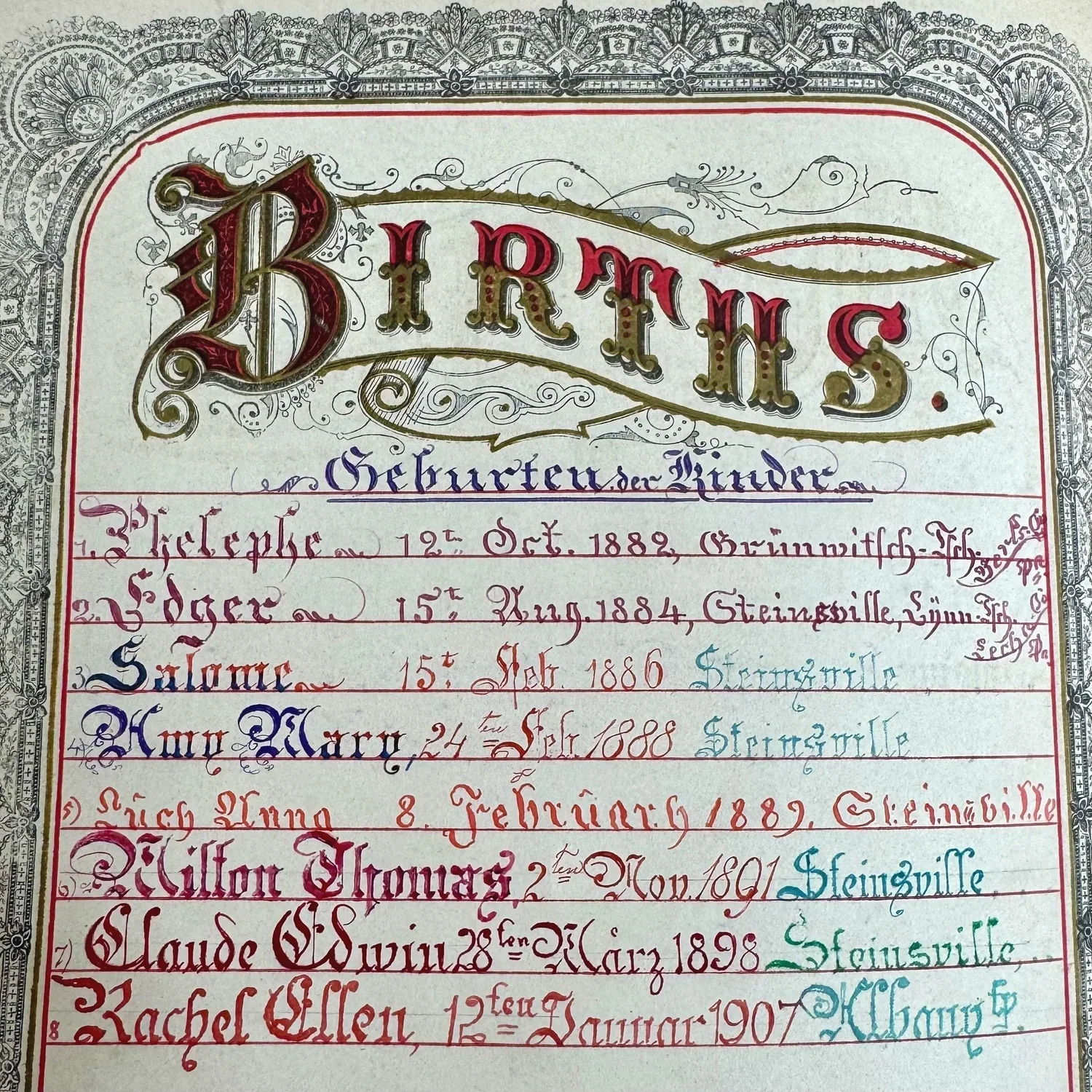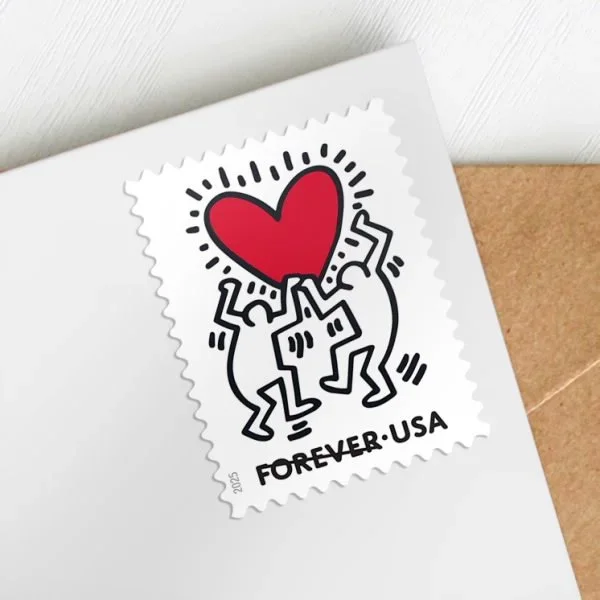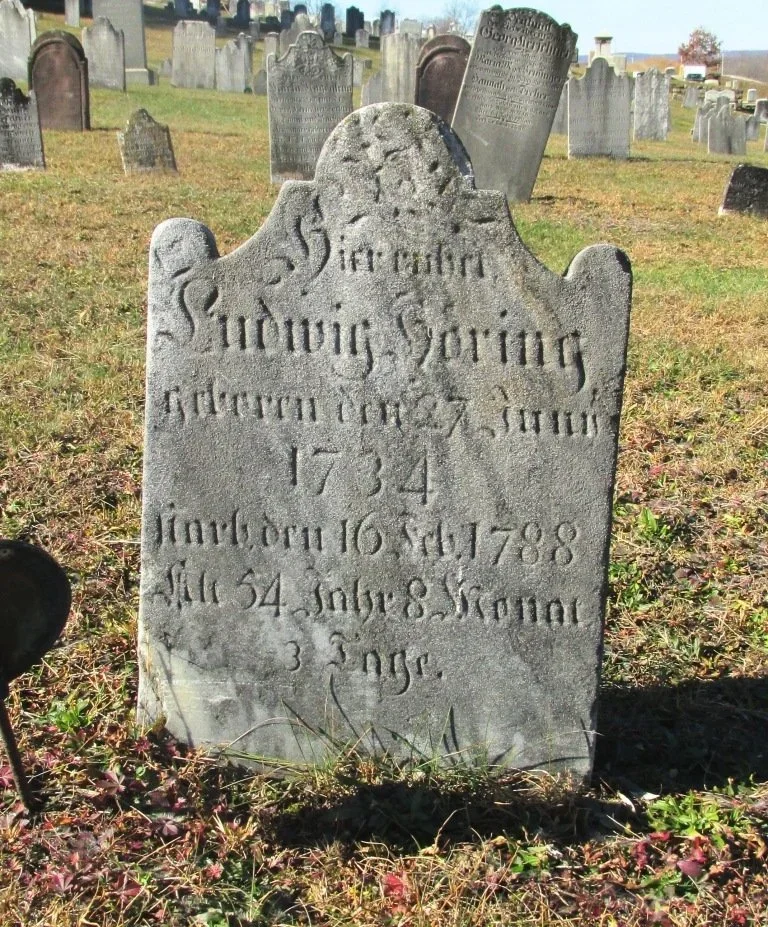Yost’s ghost
Yost Yoder died in 1742 and was sorely missed from the old homestead along the Manatawny Creek.
Salome, 24 October 2025
[as we approach Halloween, I’m reposting some spooky tales from an earlier version of this blog]
Yost Yoder died in 1742 and was sorely missed from the old homestead along the Manatawny Creek. His daughter Elisabeth, especially, wondered about him — Where was he? How was he?
On an August morning the year following her father’s death, Elisabeth sensed his presence in the home. So overcome was she, that she couldn’t eat or sleep. The next day, while outside at work, something pulled her back into the house. And there, sitting on the bed, was her father — dressed and looking just as he did in his coffin a year earlier. Elisabeth ran back outside, fell to the ground, and began shaking violently.
Her mother was worried and arranged for her daughter to go to a neighboring farm for a few days’ rest. But Elisabeth found no rest there; something deep inside pulled her back home. The next morning, she returned and went straight to the bedroom. The room turned pitch black and silent, an eerie feeling surrounded her. She wasn’t alone. Just then a bright light appeared in the darkness — the glowing ghost of her father, Yost Yoder!
They spoke with each other, and she learned that he had returned from the grave to tell her two important things. One: to heed her mother. And two: to heed the “Frenchman” — for he preaches the truth. Elisabeth tried asking more questions, but all that came was a warning. She would suffer a terrible illness in the coming days and come close to death — whereupon she would recover. With that, her father's ghost disappeared.
That evening, Elisabeth fell ill, declining slowly over the next two days, until finally on the third night those who watched over her were certain that death had come calling again at the Yoder home. But by morning, exhausted, Elisabeth awoke, gaining in strength, and ready to tell everyone her story.
And so, it was written up from Elisabeth’s own retelling and published by Christopher Sauer in 1744 in a book of ghost stories. The “Frenchman” was George de Benneville, a Huguenot and Christian Universalist preacher who lived in the Oley Valley.
Title page of the 1744 publication
First published telling of the ghost story
Henry Fisher’s book
The Pennsylvania Dutch loved to add decorations all over.
Mieleta, 19 September 2025
The Pennsylvania Dutch loved to add decorations all over. An old Bible in the Tuliptree Collection has a curious decoration on the tail edge of the textblock.
Decoration on the textblock
It’s a simple punch-type decoration with a sweet heart. We’re familiar with the common bookplate decorations of the Pennsylvania Dutch, but page edge decoration is more of an English practice. The Swem Library at William & Mary has a large collection of such fore-edge painted books. This book is certainly not English — it’s a 1782 Luther translation of the Bible printed at Halle, Germany.
Title page, Luther Bible, printed in Halle 1782
An inscription inside tells us who owned it.
Henry Fisher’s book 1784
Henry Fisher was born in 1758 in Lower Heidelberg (Berks County), the son of Johann Peter and Maria Appolonia (Heckert) Fisher, and moved to the Oley Valley, eventually buying a property there. Between 1798 and 1801, Henry and his wife Susanna Ruth had their beautiful limestone home built. It is an example of the growing popularity of Georgian house architecture among the Pennsylvania Dutch.
Fisher House, Historical American Buildings Survey, Library of Congress
Although it has classic Georgian characteristics, it was still built in the Oley Valley and so the carvings around the door, for example, are hallmarks of Pennsylvania Dutch craftsmanship.
Front door carving on the Fisher House, Historical American Buildings Survey, Library of Congress
Susanna Fisher died in 1821 and was the first burial in the new section of the Oley Union Cemetery in Spangsville. Henry, however, doesn’t rest next to his wife — in fact, he isn’t buried in Oley at all. In 1823, he visited his daughter Mary who had since moved 175 miles west. Henry died on that trip to Huntington County and so there he remains. Certainly, there was more than one Henry Fisher, but we can be more certain that Henry Fisher of Oley was the owner of Bible, because of a letter tucked inside. The letter was written to Mary’s grandson Norman by the daughter of Mary’s brother David who then occupied the Fisher home in the Oley Valley.
The Fisher home is still in the family and is located along 662 in Oley. They run a produce business, so stop by for some fruits and vegetables when you’re in the area.
Bible scriveners
Early on, Pennsylvania Dutch families documented loved ones with fraktur, especially birth- and baptismal certificates, that were often tucked away in drawers and chests, or perhaps folded and safeguarded in the family bible.
Nathaniel, 5 September 2025
Early on, Pennsylvania Dutch families documented loved ones with fraktur, especially birth- and baptismal certificates, that were often tucked away in drawers and chests, or perhaps folded and safeguarded in the family bible. In the 19th and early 20th centuries, Pennsylvania Dutch families relied on the pages in the family Bible itself to keep track of its members. Sometimes someone in the household would pen names and dates on the Bible’s pages, and sometimes a scrivener would be hired to pen names and dates in fancier, calligraphic writing. Folklorist Don Yoder called this the last development in Pennsylvania Dutch manuscript art.
Georg August S. Hainbach was a prolific scrivener of family Bibles from around the 1870s until the 1920s. He worked primarily in Berks, Lancaster, and Lehigh Counties.
Title page penned by scrivener G. Aug. S. Hainbach
This family Bible in the Tuliptree Collection once belonged to William H. and Mary (Bond) Long. Its beautiful family registry with the birth and baptisms of William and Mary was penned by Hainbach — he signed as much in the first few pages of the Bible.
Family registry
Evidence shows that families kept notes on births, baptisms, marriages, and deaths until a scrivener was hired, or until an itinerant scrivener arrived at the door looking for work. We can see that plainly in this family bible.
Births in the Long family
On a page devoted to the births of their children, the first two for Phelephe and Edger are penned by Hainbach in his characteristic artful calligraphy and curved lines containing additional information. The next two (Salome and Amy) are done by the same hand, but not by Hainbach. The initial S in Steinsville differs and the 8s end on the bottom loop instead of the top loop. Lucy’s entry is by yet a third hand that replicates Hainbach’s S, but it’s much less confident and again the 8 is different. By the time their sixth child, Milton, was born, it looks like the second scrivener may have returned. And Claude’s entry under that one is similar, too, but in different inks. The last entry is likely a fourth scrivener. The writing is fairly shaky, the E differing from Hainbach and the A differing from the second scrivener.
Most of these folks are buried in the New Bethel Union Cemetery in Albany Township in the shadow of the Zinnekopp — a place I’ve visited many times, but never inside the church. I should remedy that soon.
Hearts for Keith Haring
Although we tend to identify Pennsylvania Dutch artists as practicing a distinctive folk art style, artists of Pennsylvania Dutch stock run the entire gamut of the art world.
Peterkett, 1 August 2025
Although we tend to identify Pennsylvania Dutch artists as practicing a distinctive folk art style, artists of Pennsylvania Dutch stock run the entire gamut of the art world. Keith Haring is one of the most widely known and celebrated. On his father’s side, Keith is descended from Pennsylvania Dutch immigrant Ludwig Höring, born in 1734, who came to Pennsylvania on the ship Neptune in 1754. Ludwig operated the Brunswick Tavern, located along Highway 61 on the edge of the village of Deer Lake in Schuylkill County — which was in a state of severe disrepair the last I saw.
Gravestone of Ludwig Höring, Zions Red Church Cemetery, Orwigsburg, Schuykill (findagrave.com)
He spent his childhood in the heart of the Pennsylvania Dutch country, in Kutztown, Berks County. He graduated from Kutztown Area High School in 1976. And just last year, a Pennsylvania historical marker was unveiled there. Keith’s iconic style started in New York City subway graffiti and later came to reflect his social activism, providing commentaries on social and political issues of the 1980s like apartheid, homosexuality, AIDS, nuclear war, and others. This year, the United States Postal Service released a love stamp featuring his untitled work from 1985.
2025 Love stamp, USPS
The stamp is a beautiful tribute to the universal and unbounded nature of love, an enduring message from the artist. It serves as a new tribute to the memory of our Pennsylvania Dutch kin, Keith Haring, who died far too young in 1990 of AIDS-related complications.

